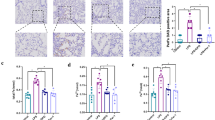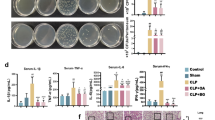Abstract
The effect of priming human neutrophils with lipopolysaccharide was investigated regarding the respiratory burst activity generated during phagocytosis of IgG-or C3b-opsonized yeast particles. LPS pretreatment significantly enhanced the respiratory burst activity, measured as luminol-amplified chemiluminescence, of both types of opsonized particles. In control cells most of the activity was produced intracellularly, probably in the phagosomes. In the primed cells, however, extracellular release of reactive oxygen metabolites was significantly increased during Fc-and CR3-mediated phagocytosis (P < 0.01 andP < 0.002, respectively). The release was most pronounced when using C3b-opsonized particles. Potent oxygen metabolites acting together with lysozomal enzymes are of importance in inflammatory-induced tissue damage. An increased extracellular release of reactive oxygen species by phagocytizing primed neutrophils can therefore lead to greater damage to the surrounding tissues.
Similar content being viewed by others
References
Proctor, R. A. 1985. Effects of endotoxin in neutrophils.In Handbook of Endotoxin, Vol. 3: Biology of Endotoxin. L. J. Berry, editor. Elsevier, Amsterdam. 244–259.
Guthrie, L. A., L. C. McPhall, P. M. Henson, andR. B. Johnston, Jr. 1984. Priming of neutrophils for enhanced metabolites by bacterial lipopolysaccharide.J. Exp. Med. 160:1656–1671.
Forehand, J. R., M. J. Pabst, W. A. Phillips, andR. B. Johnston, Jr. 1989. Lipopoly-saccharide priming of human neutrophils for enhanced respiratory burst.J. Clin. Invest 83:74–83.
Vosbeck, K., P. Tobias, H. Mueller, R. A. Allen, K.-E. Arfors, R. J. Ulevitch, andL. A. Sklar. 1990. Priming of polymorphonuclear granulocytes by lipopolysaccharides and its complex with lipopolysaccharide binding protein and high density lipoprotein.J. Leukocyte Biol. 47:97–104.
Zimmerli, W., A.-M. Reber, andC. A. Dahinden. 1990. The role of formylpeptide receptors, C5a receptors, and cytosolic free calcium in neutrophil priming.J. Infect. Dis. 161:242–249.
Klein, J. B., V. Payne, T. M. Schepers, andK. M. McLeish. 1990. Bacterial lipopolysac-charide enhances polymorphonuclear leukocyte function independent of changes in intracellular calcium.Inflammation 14:599–611.
Springer, G. F., andJ. C. Adye. 1975. Endotoxin-binding substances from human leukocytes and platelets.Infect. Immun. 12:978–986.
Wilson, M. E., D. P. Jones, P. Munkenbeck, andD. C. Morrison. 1982. Serum-dependent and -independent effects of bacterial lipopolysaccharide on human neutrophil oxidative capacity in vitro.J. Reticuloendothel. Soc. 31:43–57.
Wright, S. D., S. M. Levin, M. T. C. Jong, Z. Chad, andL. G. Kabbash. 1989. CR3 (CD11b/CD18) expresses one binding site for Arg-Bly-Asp-containing peptides and a second site for bacterial lipopolysaccharide.J. Exp. Med. 169:175–183.
Smedly, L. A., M. G. Tonnesen, R. A. Sandhaus, C. Haslett, L. A. Guthrie, andR. B. Johnston, Jr. 1986. Neutrophil-mediated injury to endothelial cells. Enhancement by endotoxin and essential role of neutrophil elastase.J. Clin. Invest. 77:1233–1243.
Briheim, G., P. Follin, S. Sandstedt, andC. Dahlgren. 1989. Relationship between intra-cellularly and extracellularly generated oxygen metabolites from primed polymorphonuclear leukocytes differs from that obtained from nonprimed cells.Inflammation 13:455–464.
Holme, T., A. A. Lindeerg, P. J. Garegg, andT. Onn. 1968. Chemical composition of cellwall polysaccharide of rough mutants ofSalmonella typhimurium.J. Gen. Microbiol. 52:45–54.
Galanos, L., O. Luderitz, andO. Westphal. 1969. A new method for the extraction of R lipopolysaccharides.Eur. J. Biochem. 9:245–249.
Bøyum, A. 1968. Isolation of mononuclear cells and granulocytes from human blood. Isolation of mononuclear cells by one centrifugation and of granulocytes by combined centrifugation and sedimentation at 1 × g.Scand. J. Clin. Lab. Invest. (Suppl.) 97:77–89.
Hed, J., andO. Stendahl. 1982. Differences in the ingestion mechanisms of IgG and C3b particles in phagocytosis by neutrophils.Immunology 45:727–736.
Fumarulo, R., D. Giordano, A. Mosca, R. A. Monno, andG. Miragliotta. 1989. Different priming on human neutrophil respiratory burst by lipopolysaccharides from phase I and phase IICoxiella burnetii.Microbiologica 12:55–60.
Lock, R., andC. Dahlgren. 1988. Characteristics of the granulocyte chemiluminescence reaction following an interaction between human neutrophils andSalmonella typhimurium bacteria.APMIS 96:299–305.
Bjerrum, O., andN. Borregaard. 1989. Dual localization of the dormant NADPH oxidase and cytochromeb 558 in human neutrophils.Eur. J. Haematol. 43:67–77.
Aida, Y., andM. J. Phabst. 1990. Priming of neutrophils by lipopolysaccharide for enhanced release of superoxide.J. Immunol. 145:3017–3025.
Borregaard, N. 1988. The human neutrophil. Function and dysfunction.Eur. J. Haematol. 41:401–413.
Follin, P., andC. Dahlgren. 1990. Altered O2/H2O2 production ratio by in vitro and in vivo primed human neutrophils.Biochem. Biophys. Res. Commun. 167:970–976.
Dechatelet, L. R., G. D. Shirley, P. S. Long, D. A. Bass, M. J. Thomas, F. W. Hen-Derson, andM. S. Cohen. 1982. Mechanism of the luminol-dependent chemiluminescence of human neutrophils.J. Immunol. 129:1589–1593.
Dahlgren, C., andO. Stendahl. 1983. Role of myeloperoxidase in luminol-dependent chemiluminescence of polymorphonuclear leukocytes.Infect. Immun. 39:736–741.
Fanton, J. C., andP. A. Ward. 1985. Polymorphonuclear leukocyte-mediated cell and tissue injury: Oxygen metabolites and their relation to human diseases.Hum. Pathol. 16:973–978.
Author information
Authors and Affiliations
Rights and permissions
About this article
Cite this article
Follin, P., Dahlgren, C. Phagocytosis by lipopolysaccharide-primed human neutrophils is associated with increased extracellular release of reactive oxygen metabolites. Inflammation 16, 83–91 (1992). https://doi.org/10.1007/BF00918949
Issue Date:
DOI: https://doi.org/10.1007/BF00918949




